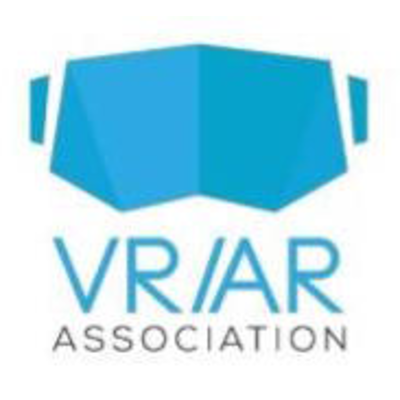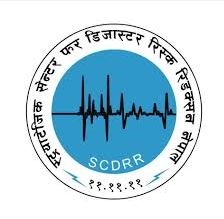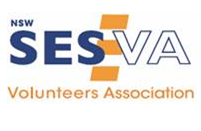| Time |
Agenda |
|
|
Keeping Pulse In Disaster Response With Social Media Analytics |
|
| 09:15 |
Translating Tweets Into Insights For Disaster Response |
|
|
CSIRO’s Emergency Situation Awareness (ESA) software detects unusual behaviour in the Twitter stream and quickly alerts the user when a disaster event is being broadcast. ESA also stores complete Twitter stream information and allows post-event analyses. Such useful and accessible information can provide timely situation awareness for disaster managers and emergency response agencies. ESA works by exploiting the statistical incidence of words used on Twitter to describe emergency events. It’s trained using historical word occurrences from past disaster incidents. This allows ESA to reveal emerging topics and flag them for investigation. |
|
 |
Ryan Vanderhorst
Social Media and Content Specialist
Bureau of Meteorology |
 |
09:45
|
Identifying Evacuation Patterns Using Social Media Analytics |
|
|
In July 2018, a spark near the Mendocino National Forest ignited California’s largest wildfire on record. As the Ranch Fire spread rapidly, officials declared mandatory evacuations in several areas and counties. Analyzing evacuation and recovery patterns could help researchers understand how humans behave in the face of a disaster, which could inform emergency response efforts. Jia said nobody was able to provide population movements during a disaster, especially at a high temporal and spatial resolution—until Facebook manner. |
|
 |
Mark Tregellas
Founder
Crisis Cleanup Australia |
 |
| 10:15 |
Morning Refreshments & Networking Session |
|
|
Empowering Disaster Response Capacity With Robotic Technology
|
|
| 10:30 |
Innovations In Cobots And Exoskeleton In Fighting Bushfires
|
|
|
Bounding up numerous flights of stairs when the elevator is out is punishing enough for our legs and lungs, but imagine having to do so while carrying heavy equipment needed to extinguish a blazing high-rise fire. Such a scenario has prompted specialist vehicle manufacturer Trigen Automotive to work with Singapore’s Civil Defence Force to develop Auberon, a purely mechanical exoskeleton designed to take the strain out of carrying emergency equipment up to tower-top fires. Trigen says that the breathing apparatus, hose lines, nozzles, power tools and more which often make up a firefighter’s emergency toolkit can all add up to 40 kg (90 lb) of back-punishing weight, particularly when having to climb flights of stairs in a burning tower. Such equipment becomes much less of a burden when mounted to the Auberon Pneumatic Exoskeleton’s specially-designed frame.
|
|
 |
Mark Cuthbert
Advisor, Lessons and Evaluation
Australian Maritime Safety Authority |
 |
| 11:00 |
Saving Flood Victims With Remote-Controlled Rescue Boat Emily |
|
|
Emily, which stands for Emergency Integrated Lifesaving Lanyard, is essentially a remote-controlled rescue boat. Since 2010, Emily robotic rafts have been used to rescue people. Thermal cameras can help Emily spot people in the water and slow down before arriving at their location, even turning itself the long way for an easier rescue. The idea is to make it possible for someone to call off the coordinates of a victim far away, and have a computer convert those — send them to GPS, to the robot, so that the robotic raft can arrive and help someone in the water, while the lifeguard can tend to people who need help elsewhere. |
|
 |
Ludovic Grosjean
Principal Consultant
OceanX Group
|
 |
|
Firefighting Drones |
|
| 11:30 |
Fireside Chat: Are Firefighting Drones The Answer? |
|
|
- Overview of recent incident on drones causing waterbombing to be grounded on bushfire rescue attempt
- Why drones can be dangerous in bushfire surrounding?
- What countermeasures can be done?
|
|
 |
Joe Urli
President & Chairman
ACUO – Australia Certified UAV Operators (Invited)
|
 |
|
Overcoming Network Failures During Disasters With Innovative Technology |
|
| 12:00 |
Championing Innovation With Serval Mesh – An Emergency Communication Network |
|
|
An Adelaide-designed app enabling mobile phone users to communicate even if their networks fail has won international acclaim at the Pacific Humanitarian Challenge. Dr Paul Gardner-Stephen of Flinders University created the Serval Mesh app so people in disaster-struck areas could continue to communicate among themselves. Serval Mesh utilises Bluetooth and wi-fi to transfer encoded messages between neighbouring phones hosting the app. Primarily, data in the form of SMS, maps and other text files can be moved across the network. If a direct link is available between phones, a phone call can be made. Dr Gardner-Stephen said the initial concept was to provide emergency communication systems when traditional phone towers were damaged. |
|
 |
Paul Gardner-Stephen
Founder and CTO, Serval Project, Senior Lecturer
Flinders University
|
 |
| 12:30 |
Networking Luncheon |
|
|
Strengthening Australia’s Disaster Preparedness And Resilience |
|
| 13:30 |
Understanding The Australian Disaster Preparedness Framework In Practice |
|
|
The Australian Disaster Preparedness Framework supports Australia to develop the required capability to effectively prepare for and manage severe to catastrophic disasters The framework encompasses the following areas:
- Understand risks & consequences;
- Understand Capability Requirements;
- Enhance & Develop Capabilities;
- Foster Partnerships;
- Plan, coordinate capabilities and partnerships; Inform policy, investment & expectations;
- Establish effective governance, roles & responsibilities.
|
|
 |
John Gawne
Advisory Board Member Powerline Bushfire Satety Program
Department of Environment, Land, Water and Planning
Managing Director
Resilient Services Pty Ltd
|
|
|
Ensuring Transparency And Accuracy For Disaster Relief Support With A Secure Blockchain System |
|
| 14:00 |
Case Study Of Red Cross Boosts Disaster-Prone Communities With Blockchain ‘Cash’
|
|
|
The technology allows slum dwellers and rural villagers with simple mobile phones to effectively create their own local currencies to bootstrap development.
|
|
 |
Tristan Cole
Co-Founder
Sempo |
 |
|
Assessing A City’s Vulnerability To Earthquakes With AI And Big Data |
|
| 14:30 |
How AI And Big Data Helps City Councils To Identify Earthquake Vulnerability In Cities And Prepare For Emergency Evacuation
|
|
|
Detecting seismic vulnerability in urban areas is critical. Identifying high-risk buildings can save lives and help prioritize retrofitting investments. However, sending large teams of surveyors into the field is time consuming and expensive. Instead, this case study leverages imagery from satellites and drones, and street-view images from 360° street cameras to identify homes that are a high risk for collapse during an earthquake. Digital elevation models from satellite imagery helped identify buildings located on steep slopes, which are at higher risk for mudslides. A combination of satellite and drone imagery helped identify rooftop material, suggesting underlying construction techniques which are more vulnerable to seismic activities. The availability of street-view imagery is unique, as it can be used to identify soft-story constructions which are vulnerable to seismic activities. This case study is a good example of how different physical factors of vulnerability can be extracted from various data sources and the unique capabilities of street-view imagery. The deep learning algorithm trained on the street-view imagery caught 85% of the buildings which were flagged by expert engineers as vulnerable.
|
|
|
|
|
| 15:00 |
Afternoon Refreshments & Networking Session |
|
|
Enhancing Training For Disaster Preparedness With AR/VR Technology |
|
| 15:30 |
How Virtual Reality Helps Train Fire Fighters In Handling Emergency Responses During Searing Bushfires
|
|
 |
Pradeep Khanna
Executive Director, Asia Pacific
VR AR Association
|
 |
|
Telemedicine Empowered By 5G Network In Disaster Emergency |
|
| 16:00 |
Successfully Implementing Disaster Preparedness, Response And Resilience Plan |
|
|
- How technology can be utilized in resilience process.
- How technology driven resilience can be used more effectively
- How technology can work with existing laws and regulations
- Harmony between regulations and human behavior.
|
|
 |
Jelenko Dragisic
Executive Officer
Greening Australia Training |
 |
|
Pioneering Innovation In Disaster Response Mission |
|
| 16:30 |
Using 3D Printing To Deliver Critical Spare Parts And Medical Equipments During Disaster Relief |
|
|
As you step into World Vision’s Innovation Lab, there are dozens of things that might catch your attention. The buzz of a 3D printer whirring in the corner, a giant blackboard decorated with sketches, or the quiet focus of the teams dotted around the room. What might not catch your gaze is a seemingly simple, yellow pipe fitting resting on a desk. It looks basic enough; a ring made of hard plastic. But it actually symbolises something much bigger, both for communities affected by the Nepal Earthquake and the future of disaster responses around the globe. This pipe fitting is a new, tailored solution for earthquake-damaged water systems in Nepal. Its creation has been made possible because of the 3D printing expertise of Field Ready, a start-up aid group. In the past, a damaged water pipe in Nepal would be repaired by community members using makeshift solutions, such as wrapping a plastic bag over the leak. But today, this new fitting is delivering a much more secure and sanitary solution for leaking pipes. More importantly, it’s showing what’s possible when local and international innovators and active local communities have the chance to collaborate. |
|
 |
Ratindra Khatri
Crisis, Emergency and Disaster Management Specialist
SCDRR-Nepal
|
 |
| 17:00 |
Utilization Of Helicopters For Flood Rescue And Reconnaissance |
|
 |
Shannon Crofton
Vice President, NSW SES Volunteers Association
Leading Firefighter, Fire and Rescue NSW
|
 |
| 17:30 |
Q&A Session & Closing Remark by Forum Chairperson |
|